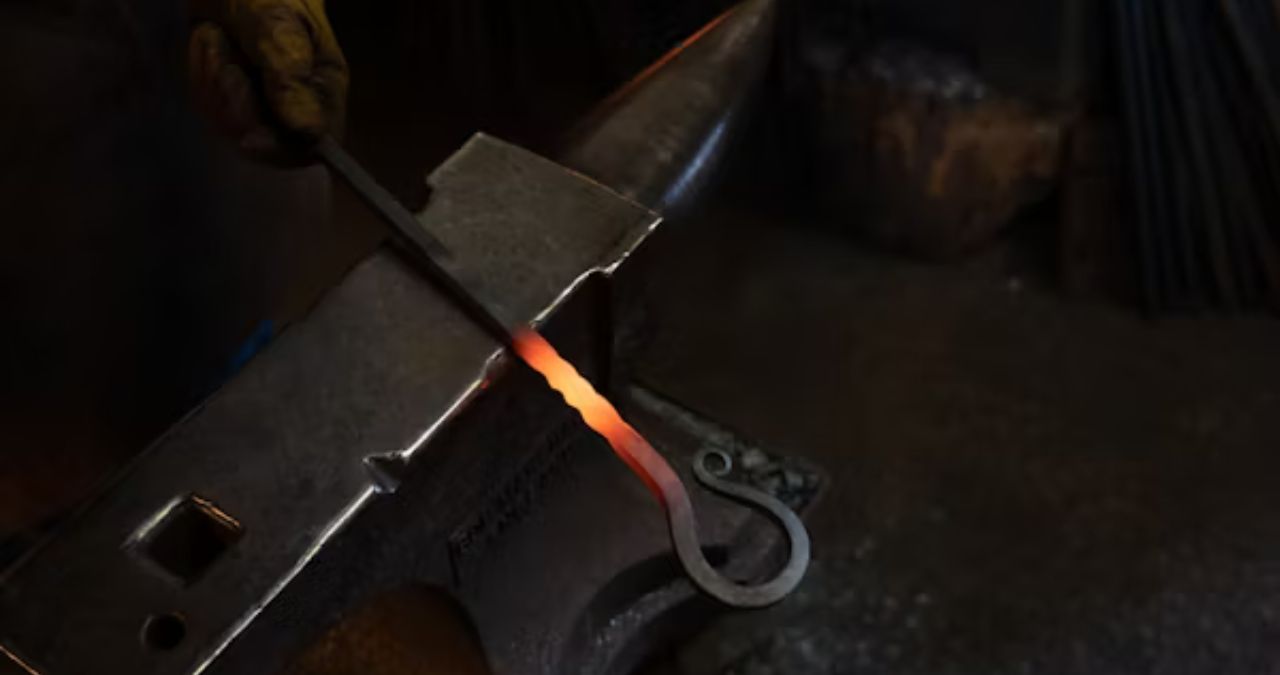BLOG
Exploring the Zoom_in Zoom Nata Montar Technology

Imagine technology so refined, so precise, that it transforms the way we experience and perceive the world around us. Zoom_in Zoom Nata Montar Technology is not just a leap forward—it’s a revolution. Packed with innovation and purpose, it invites us to explore new boundaries of clarity, functionality, and versatility. But what exactly is it? And how is it shaping the technology landscape today?
This blog will take you on a guided tour of Zoom Nata Montar Technology—the inspiration behind it, its novel features, and why it’s becoming a name synonymous with cutting-edge advancements. Whether you’re a tech enthusiast eager for innovation or someone simply curious about what this means for everyday life, you’re in the right place.
What is Zoom_in Zoom Nata Montar Technology?
To truly appreciate the significance of Zoom_in Zoom Nata Montar Technology, let’s decode its essence. At its core, this technology represents a blend of cutting-edge optical zoom mechanics and advanced control systems, designed to elevate precision and functionality in devices ranging from professional cameras to medical equipment.
But Zoom Nata Montar isn’t just about clarity—it’s about offering users a seamless level of control between manual adjustment (“Montar” meaning “mount” or “assemble”) and automated zoom functionalities. Think of it as effortlessly shifting between a painter’s delicate brushstroke and the precision of a high-speed printer—both distinct, but equally harmonious.
The “Zoom Nata Montar” name itself alludes to seamless transitions, making it an unprecedented tool for industries like photography, design, health, and beyond.
A Short History of Innovation
The inspiration behind Zoom Nata Montar Technology didn’t appear overnight. It is the culmination of years of research into optics, mechanics, and human interaction with lenses. Engineers and visionaries explored how zooming technology was used across industries, from camera lenses capturing life’s most precious moments to surgical scopes aiding life-saving procedures.
The result? A holistic framework marrying optical fidelity with unrivaled ergonomic control, crafted for the perfectionist in us all. It was designed to address frustrations such as jerky transitions, limited zoom range, and lack of customization—common complaints in older technologies.
Zoom Nata Montar Technology is not just technical innovation—it’s a response to human needs, an ode to precision, and a promise of intuitive functionality.
Key Features and Advantages of Zoom Nata Montar Technology
1. Seamless Transitions for Precise Control
Perhaps the most exciting aspect of Zoom Nata Montar is the ability to shift effortlessly between manual and automated zoom. Imagine a seamless glide that adapts to your pace—whether it’s the deliberate slowness of framing a close-up portrait or the efficiency of gainful action shots. The control is yours.
This feature is particularly prized in creative industries, where steady transitions can make or break the storytelling experience. Photographers and videographers can finally achieve unmatched smoothness, whether capturing fleeting wildlife movements or crafting a cinematic masterpiece.
2. Exceptional Optical Clarity
Like gazing through the purest crystal, Zoom Nata Montar Technology delivers unparalleled optical clarity. Every pixel, every detail is brought to life with stunning precision. The advanced lens system optimally reduces chromatic aberration, providing true-to-life colors and razor-sharp detail across its zoom range.
For professionals in industries such as architecture, science, or product design, this clarity isn’t just desired—it’s vital. From intricate schematics to microscopic exploration, the ability to see each detail accurately can change the way professionals work.
3. Ergonomics Meets Innovation
Intuitive design plays a key role in the Zoom Nata Montar experience. The system has been fine-tuned to eliminate user fatigue from prolonged operation. With strategically placed zoom controls and ergonomic adjustments, the technology blends with the user’s natural movements, ensuring greater comfort during extended use.
Whether you’re holding a camera or operating advanced medical imaging devices, it feels as though the device itself anticipates your next move.
4. Cross-Industry Versatility
One of the most remarkable traits of Zoom Nata Montar is its versatility. This technology has transcended traditional camera applications to find valuable uses in:
- Healthcare: Empowering surgeons and researchers with highly accurate imaging tools for diagnoses and surgeries.
- Sports Broadcasting: Bringing fans closer to the action with smoother and clearer optical zoom.
- Education and Training: Enabling detailed visuals for team collaboration, e-learning, and technical skill-building.
From the operating room to the film set, Zoom Nata Montar Technology bridges the gap between potential and execution.
5. Smart Automation with AI Integration
What makes Zoom Nata Montar even more forward-thinking is its integration with AI algorithms. These algorithms intuitively adjust zoom levels, lighting, and focus based on environmental conditions, ensuring optimal performance without constant manual intervention.
For instance, in a fast-paced live sporting event, the automation ensures that cameras stay in focus on key players, delivering real-time, high-quality footage without missing a beat. That’s the power of human-AI collaboration in action.
Why Should You Care About This Technology?
The introduction of Zoom Nata Montar Technology is not just another advancement in zoom technology—it’s a groundbreaking change in how we interact with optical systems. Whether you’re a filmmaker capturing ground-breaking visuals or an educator communicating complex ideas, this technology makes your experience smoother, sharper, and infinitely more engaging.
Zoom Nata Montar proves it’s not just about creating a better product. It’s about crafting better user experiences.
The Emotional Context of Zoom Nata Montar
Yes, technology often changes how we operate—but what about how we feel? Zoom Nata Montar prioritizes emotion as much as function. It allows creators to focus on the stories they tell without getting bogged down by hardware frustrations. It makes engineers confident that every detail is conveyed without compromise. It creates connections—between creators and audiences, between humans and machines.
Imagine knowing you’ll never struggle with clunky controls, distorted images, or lackluster transitions again. Zoom Nata Montar doesn’t just upgrade your tools—it renews creativity and inspires confidence.
Looking Ahead
As we continue exploring the endless applications and advancements of Zoom Nata Montar Technology, one thing remains clear—it’s here to stay. Future iterations promise even greater integration with evolving AI systems, enabling us to focus more on our ideas and less on the tools we use to convey them.
For businesses and industries, adopting this technology will mean not just staying current but firmly establishing themselves as leaders in their respective fields.
Redefining Vision Through Technology
Zoom Nata Montar Technology is more than innovation—it’s a game changer. Acclaimed for its versatility, precision, and efficiency, it has reset how professionals across industries view optical zoom mechanics.
But remember, we’re only scratching the surface. What new stories, discoveries, and possibilities await when this technology reaches its full potential? The only limit is human creativity—and Zoom Nata Montar is ready to meet it.
Looking for deeper insights into how this can transform your professional endeavors? Don’t hesitate to reach out or continue exploring the latest trends in cutting-edge technology through our platform.
BLOG
The Art and Precision of Modern Metal Cutting Techniques

Metal cutting is a crucial procedure in numerous sectors, allowing for the transformation of raw metals into precise shapes and sizes required for specific applications. The significance of precision metal cutting cannot be overstated, as it contributes significantly to advancements in manufacturing and engineering. Metal cutting techniques have evolved to support the creation of components integral to modern engineering projects, from intricate parts requiring extraordinary precision to robust components designed to withstand severe conditions. This article delves into the evolution, techniques, and future trends of metal cutting, a crucial aspect of modern industrial processes, offering insight into how these sophisticated techniques are shaping the world around us.
Introduction to Metal Cutting
At the core of manufacturing is metal cutting, a process that not only turns raw materials into essential components but also influences the quality and performance of the final product. Without accurate metal cutting, industries would struggle to satisfy the strict demands of contemporary machinery and infrastructure. This procedure is fundamental in manufacturing, allowing engineers and designers to expand the limits of functionality and aesthetics across a range of products, from everyday household items to advanced aerospace innovations. As such, understanding metal cutting involves being familiar with the techniques and appreciating their broader impact on technology and innovation.
The Evolution of Metal Cutting Technology
Metal cutting technology has transformed remarkably from the early days of hammers and chisels to today’s high-tech laser cutters—initially, manual tools required skilled labor and significant time investments for detailed cuts. However, the invention of power tools brought more speed but with limited precision. The transformative advent of CNC machines marked a significant milestone, introducing computerized controls that allowed for unparalleled accuracy and consistency in production processes. This shift improved efficiency and opened new possibilities for complex geometries previously impossible to achieve with manual methods. In recent years, technological advancements such as laser cutting have enabled the handling of ultra-fine materials with minimal waste and maximum accuracy.
Common Metal Cutting Techniques
The array of metal cutting techniques available today, including laser, plasma, and waterjet cutting, offers an extensive toolkit for manufacturers and engineers. Laser cutting, renowned for its precision, uses focused light to slice through materials with exceptional accuracy and detail, making it ideal for small parts with intricate designs. Plasma cutting, using electrically conductive gas, provides a high-speed option suited for thicker materials, thus balancing cost with performance. Waterjet cutting stands out because it employs a high-pressure stream of water, often mixed with abrasives, to cut through virtually any material without introducing heat, thus preventing material warping.
Industries Relying on Metal Cutting
Metal cutting is indispensable in industries such as automotive and aerospace. From crafting the body of a vehicle to developing detailed turbine blades, the demand for flawless execution relies heavily on advanced metal cutting. In these sectors, recent updates in metal fabrication techniques are critical to enhancing the efficiency and functionality of parts. In construction and infrastructure, metal cutting is essential in creating the structural components that form the backbone of modern society, underscoring its universal application across various essential sectors.
Innovative Tools in Metal Cutting
Modern metal cutting tools have seen significant advancements to meet the needs of industry professionals who demand more from their equipment. Innovations like smart tools with IoT capabilities allow for real-time monitoring and adjustments, increasing safety and efficiency. These tools, often integrated with AI-driven systems, can learn and adapt to intricate tasks, minimizing errors and enhancing productivity. Advances in materials, such as diamond-edged cutting tools, contribute to longer tool life and cleaner cuts, which are crucial in high-precision environments like electronics and medical devices.
Safety and Environmental Considerations
Safety remains a top priority in metal-cutting environments due to potential hazards such as flying debris, harmful noise levels, and intense light emissions. Adhering to safety protocols, such as wearing personal protective equipment (PPE) and properly maintaining machinery, significantly reduces these risks. Environmental considerations are equally vital, with an increasing focus on reducing waste and energy consumption. Implementing sustainable practices underscores the growing commitment across industries to ecological responsibility.
Future Trends in Metal Cutting
As we look ahead, the field of metal cutting is set for thrilling advancements propelled by technological progress and growing environmental awareness. Techniques such as hybrid cutting systems, which combine different methods for optimal results, are on the rise. At the forefront of these advancements is the integration of AI, which promises enhanced predictive maintenance and operational efficiency. Moreover, sustainable cutting solutions, aided by eco-friendly technologies and materials, are transforming the industry to be more compliant with global green standards. Staying abreast of engineering innovations and enhancing productivity will be key to maintaining competitive advantage as the industry evolves.
Conclusion
In conclusion, metal cutting is a vital process that is continuously advancing in its techniques and applications, shaping the fabric of modern industry. Its evolution from manual to high-tech methods underscores the dynamic nature of technological progression in meeting ever-increasing demands for precision and efficiency. As we navigate future challenges and innovations, the emphasis on sustainable practices and cutting-edge technology will define the trajectory of this essential industrial process, ensuring that metal cutting remains at the forefront of manufacturing and design innovation for years to come.
BLOG
Transform Your Bathroom: Creative Remodeling Ideas to Enhance Functionality and Style

Introduction to Bathroom Remodeling
Revamping your bathroom isn’t just about creating a luxurious retreat; it can also significantly boost your property’s value. With home renovation trends rising, embracing innovative ideas in bathroom remodeling can turn your personal space into a serene sanctuary. For those seeking inspiring transformations, explore diverse projects at https://aldrichcontracting.com/our-work/bathroom-remodeling/ that illustrate the art of blending functionality with aesthetics. A well-executed remodel doesn’t merely refresh the visual appeal but enhances everyday usability, making your bathroom a place of relaxation and renewal.
Homeowners increasingly recognize the bathroom as a pivotal space deserving of special attention. Often seen merely as a utilitarian space in years past, the modern bathroom now serves as a refuge from the busyness of daily life. From contemporary fixtures to sustainable materials, the scope for creativity is vast. Dive into these remodeling ideas that promise to elevate your bathroom’s style and efficiency, creating a place of comfort and an expression of personal style.
Benefits of a Bathroom Makeover
Upgrading your bathroom is a savvy investment yielding aesthetic enhancement and increased property value. A remodeled bathroom captivates potential buyers and adds to the appeal of your home. According to the Cost vs. Value Report, bathroom renovations often result in substantial returns during a home’s resale. From modern fixtures to innovative design elements, a well-executed bathroom upgrade can transform your space into a sophisticated sanctuary, supporting style and function. The addition of spa-like amenities—rain showers, soaking tubs, and radiant floor heating—turns everyday routines into moments of luxury, thus providing long-term satisfaction and enhancing the property’s appeal.
Popular Styles for Modern Bathrooms
Regarding style, bathrooms offer a canvas for creativity and personal expression. Contemporary trends favor minimalist designs, vintage flair, and industrial chic aesthetics. By focusing on sleek lines, neutral palettes, and non-cluttered decor, minimalist designs impart a sense of calm and increase the room’s elegance. Meanwhile, vintage elements such as claw-foot tubs, antique fixtures, and retro tiles introduce nostalgia and charm, making the space unique and inviting. The industrial chic style combines raw materials like exposed brick and metal accents, bringing an edgy vibe and practical durability. Whether opting for modern minimalism or bold vintage touches, the right blend of style and personal taste can create a functional and luxurious bathroom.
Enhancing Space Efficiency and Functionality
Efficient design is key to a successful bathroom remodel, especially in smaller spaces. Creative storage solutions like floating shelves, hidden cabinets, and recessed niches can increase storage without consuming floor space. To enhance usability, choosing fixtures that fit the bathroom’s dimensions and meet its users’ daily needs is essential. Consider dual-function installations like a vanity with under-sink storage or a mirror with integrated lighting. Thoughtful design maximizes space and elevates functionality, ensuring that even the smallest bathrooms feel expansive and practical. By choosing innovative layout designs, homeowners can balance style and efficiency, maximizing every inch of their remodeled space.
The Role of Eco-Friendly Materials
Embracing sustainable materials in your bathroom remodel is a win for the environment and your home’s aesthetic appeal. Opt for low-flow toilets and faucets, significantly reducing water consumption while maintaining performance. Eco-friendly tiles from recycled glass or porcelain offer style and sustainability, aligning good design with ecological responsibility. Exploring the full potential of sustainable options is transformative. By choosing green alternatives such as bamboo flooring, VOC-free paints, and recycled fixtures, homeowners contribute to a healthier planet while enjoying the long-lasting benefits of quality materials.
Budgeting for a Bathroom Remodel
Planning a bathroom remodel necessitates a clear strategy to adhere to your financial limitations while maximizing the results. It’s essential to identify project aspects where splurging is advantageous—such as investing in high-quality countertops, shower systems, or custom cabinetry—and where cost-effective solutions can be applied, like selecting budget-friendly lighting or tiling. Careful planning makes achieving a balanced approach that fulfills aesthetic desires and practical needs possible without financial strain. Engaging with professionals for a detailed scope of work ensures transparency. It allows homeowners to adjust their expectations and budgets accordingly, resulting in a reliably managed project from start to finish.
Conclusion: Tips for a Successful Renovation
Transforming your bathroom can be a rewarding endeavor that combines creativity with practicality. Remember to tailor your design to reflect your style, embrace efficiency, and practice sustainable living. From sleek modern designs to quiet vintage charm, the possibilities are endless. By balancing indulgence with innovation, your new bathroom can become a luxurious retreat that adds significant value and comfort to your home. Whether through minor tweaks or a full-scale makeover, successful renovations hinge on thoughtful planning and execution, ensuring lasting satisfaction and aesthetic appeal.
BLOG
How Botox Works: Understanding the Science Behind Smoother Skin

Botox is a popular cosmetic procedure known for smoothing wrinkles and fine lines. It works by temporarily paralyzing specific facial muscles. Understanding the science behind Botox can help individuals make informed choices about its use.
Introduction
Botox is one of the most well-known cosmetic procedures. Widely used to reduce the appearance of wrinkles, many people seek Botox treatments for their proven effectiveness and minimal recovery time. But what about Botox? What makes it so successful in achieving smoother skin?
Exploring Botox’s scientific basis is essential to understanding its impact. This article delves into the biological mechanisms that underpin Botox treatments, elucidating how this substance achieves its desirable effects. This exploration is timely and invaluable for individuals contemplating Botox or those interested in the biochemistry behind smoother, more youthful skin.
The Mechanism of Botox
Botox, medically known as botulinum toxin, is derived from a bacterium called Clostridium botulinum. While it originated from a toxin, researchers have harnessed its properties to safely and effectively address cosmetic concerns. Botox targets the nervous system; more specifically, it blocks the release of acetylcholine, a neurotransmitter responsible for muscle contraction.
When a small, controlled dose of Botox is injected into specific facial muscles, it inhibits the nerve signals that trigger muscle contractions. This temporary paralysis relaxes wrinkles and fine lines, resulting in a smoother appearance. Botox can be employed in various settings, such as Salt Lake City, where skilled botox in Salt Lake City provides tailored treatments for a diverse clientele.
How Botox is Applied
The application of Botox is a precise process that requires a trained healthcare professional to ensure safety and desired outcomes. The journey begins with a comprehensive consultation, during which the patient’s goals and medical history are assessed. Understanding the facial anatomy is crucial, as it allows the practitioner to identify target areas for injection.
Once the target muscles are identified, the practitioner uses fine needles to inject the Botox directly into these areas. This minimally invasive procedure usually takes less than 30 minutes, allowing patients to resume their daily activities immediately. Knowing the optimal dosage and injection technique is key to preventing over or under-treatment.
Effects on Muscles and Skin
The effects of Botox are both direct and indirect. Botox provides immediate relief from expression lines by acting on muscle contractions, particularly the dynamic wrinkles that form with facial movements. Over time, the skin above these relaxed muscles starts to smooth out as constant tension is relieved, allowing the skin to recover.
In addition to cosmetic improvements, Botox has been used for medical purposes, such as treating migraines and excessive sweating. Skin starts to feel more supple and youthful, and these aesthetic changes often boost self-confidence, reflecting a positive psychological impact.
Duration and Maintenance
The effects of Botox are not permanent, which means recurring treatments are necessary to maintain results. Typically, the smoothing effects can be seen within a few days post-injection, with full results visible by the two-week mark. On average, the effects of a Botox treatment last between three to six months.
Individuals often schedule follow-up appointments for ongoing smoothness to ensure minimal lapse in muscle relaxation. With regular treatments, some find they can extend the time between sessions as their muscles gradually adapt to reduced activity. Each session should be tailored to the patient to prevent muscle atrophy or other adverse effects.
Safety and Efficacy
Botox is well-regarded for its safety when administered by a trained and experienced professional. While potential side effects like bruising or minor swelling can occur, serious complications are rare. Following post-treatment guidelines, such as avoiding strenuous activities and keeping the head upright, can mitigate risks.
Its efficacy is backed by numerous clinical studies and satisfied patients who continue to choose Botox for their aesthetic goals. The assurance of predictable outcomes makes Botox a staple in cosmetic dermatology. Nevertheless, candid conversations with healthcare providers ensure patients have realistic expectations and understand the procedure’s limitations and benefits.
Conclusion
Botox remains a cornerstone in contemporary cosmetic medicine, providing individuals with the means to achieve smoother, more vibrant-looking skin. Understanding the science behind Botox allows for informed decisions, empowering those considering this treatment to pursue it confidently.
By working with qualified professionals and clearly understanding its mechanism and effects, Botox can seamlessly fit into a skincare regimen, offering aesthetic and psychological benefits. As research continues to refine its use, Botox will likely remain at the forefront of beauty innovations, demonstrating its enduring value.
-

 BLOG12 months ago
BLOG12 months agoBebasIndo: Transforming Service Accessibility Across Indonesia
-

 TECH12 months ago
TECH12 months agoLepbound: Unlocking the Hidden Power of Optimization in Science and Technology
-

 ENTERTAINMENT12 months ago
ENTERTAINMENT12 months agoDiamond Pink: A Rare Gem, A Precious Possession
-

 BUSINESS11 months ago
BUSINESS11 months agoChannelsyncharma: Your Guide to Effective Channel Management
-

 BUSINESS11 months ago
BUSINESS11 months agoQuick Relief with Immediate 0.3 Folex
-

 TECH12 months ago
TECH12 months agoGirma Zekpa: An Influential Figure in Business and Technology
-

 NEWS11 months ago
NEWS11 months agoSo Ji-Sub LPSG: From Model to Star, the Evolution of a Korean Icon
-

 HEALTH11 months ago
HEALTH11 months agoCarson Dennis Dentist Orthodontics Navy HPSP: A Comprehensive Guide
